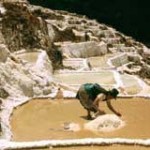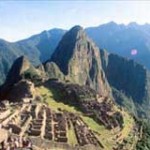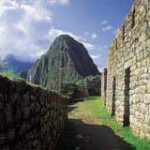Day 1 – Tuesday – Lima – Arrival
Arrival in Lima, the “City of Kings” famous for its Spanish Colonial architecture, extraordinary museums and cuisine. Lima is internationally recognized as the “Gastronomic Capital of the Americas”, and its cuisine is considered among the most diverse and exquisite in the world on par with French cuisine. Upon arrival a host will meet and assist you in transferring to the hotel and in registering.
Day 2 – Wednesday – Colonial Lima, Casa Aliaga, Modern Lima and Larco Museum (B)
This full-day tour visits both the colonial and modern sections of Lima. Colonial sites include the lovely Plaza Mayor, the Government Palace, San Francisco Church and the exquisite Torre Tagle Palace modern day seat of the Ministry of Foreign Affairs. The “Casa de Aliaga” is the oldest Colonial mansion in Lima. Due to its historic value this house was declared a Historical Monument and the owners have decided to share their heritage with visitors. The visit is an amazing experience!
Modern Lima and Larco Museum
Afternoon tour of modern Lima, among the largest in the Americas. Drive along the fashionable districts of Miraflores and San Isidro, El Parque del Amor (The Park of Love) and the striking beaches of Costa Verde. Continues to the world famous Larco Museum, founded in 1926, the museum displays remarkable chronological galleries providing an excellent overview on 3000 years of development of Peruvian pre-Columbian history. Larco Museum also features the finest gold and silver collection from Ancient Peru and the famous erotic archaeological collection, one of the most visited Peruvian tourist attractions.
Day 3 – Thursday – Lima – Chiclayo – Royal Tombs of Sipan Museum (B)
Early morning transfer from the hotel to the airport for a short but spectacular flight over the snowcapped Andes to the oldest inhabited city in the hemisphere, Cusco, at an elevation of 11,440 feet. Upon arrival a host will meet and assist you in transferring to the hotel and in registering.
Visit to Awana Kancha
This Living Museum of the Andes showcases the South American Camelidos such as llamas, vicuñas, guanacos and alpacas in their native environment. You will also enjoy a spinning and weaving demonstration of ancient techniques on how to make clothing from the wool fibers of these animals. You can also see native flowers and some agricultural terraces from the Inca times.
Lunch is served at Hacienda Huayoccari
The most noticeable aspect of the house is its sensational setting, dominating the Urubamba valley in the midst of the highland crags and vegetation through which the river flows. Above it, on the very mountain top within sight of heaven are two lakes, which seem to seethe on a rainy night. With magnificent views of the Urubamba River, the Casa-Hacienda has the magical ability to make us forget the reality of life. Today’s lunch will be a remarkable event.
Day 4 – Tuesday – Pisac Market and Ollantaytambo Archaeological Complex (B,L)
Full Day Excursion to the Pisac Indian Market and the Ollantaytambo Fortress – Morning departure for a drive through the fertile countryside of the Urubamba Valley to the colonial village of Pisac where an Indian Market takes place Tuesdays, Thursdays and Sundays. Other days you will tour the religious nucleus and archaeological site of Pisac. During your visit to the bustling marketplace you will have the opportunity to bargain with the natives for many different types of Peruvian handicrafts and jewelry.
Continue to the Ollantaytambo archaeological complex, the Incas built it as a fort that included a temple, agricultural terraces, and an urban area. There are two distinct sectors: The religious and worship zone, and the residential area. Ollantaytambo was an important administrative center with probable military functions if one considers the walls and towers. There are also traces of ancient roads and aqueducts. The town of Ollantaytambo is called a “Living Inca Town” since the inhabitants maintain very old practices and customs. Lunch is at a beautiful country estate on the shores of the Urubamba River.
Day 5 – Wednesday – Moray, Maras and Ancient Quechua Village (B,L)
Moray, Maras Salt Pools and Ancient Quechua Village – Pass through unspoiled and picturesque Andean communities on your way to the Incan agricultural experimental center of Moray, famous for its sunken amphitheater, made up of four circular terraces, which appear to fade away into the earth like an artificial crater. The site was apparently an Inca agricultural research station filled with fertile earth and watered by complex irrigation systems, designed for experimenting with crops at various altitudes.
Continue to the impressive Maras salt pools formed by water emerging from a lake inside a mountain in the Urubamba Valley. An amazing view of evaporating ponds for the extraction of salt. Learn about ancestral techniques, which are still used, in agricultural, irrigation and salt-recollection tasks, as well as in Andean festivals and rites.
Lunch at Wayra with Peruvian Paso Horse Show
“Caballo de Paso” known worldwide for their smooth gaited movements and unusual spirit. No other horse combines strength, intelligence and beauty as perfectly as the Peruvian Paso Horse. The particular characteristic of the Paso Horse is precisely the reason for its name: the sublime charm of its typical step. As it walks, its front legs step very high and forward while the hooves sway to the sides in a graceful and synchronized movement. Enjoy a delightful demonstration of the skills of this unique member of the horse kingdom. Lunch at the celebrated Wayra at “Sol y Luna” in the Sacred Valley.
Authentic Quechua Village
Visit an authentic Quechua Village to feel the way of life of the Inca’s ancestors. An Andean society with ancestral identity. The Inca himself was a noble Quechua. They have a deep sense of belonging to the land they farm, a deep sense of community they consider necessary to survive, they have little tolerance for individuality. See the Quechua way of life, children scamper about wearing their colorful ponchos while woman are weaving their family’s clothes. A meaningful experience!
Day 6 – Thursday – Start The Inca Trail (B, L, D)
The Inca Trail to Machu Picchu is rated among the best trekking trips in the world because of the exquisite beauty of its natural surroundings. These include different ecological areas from high deserts to Andean tropical rainforest. Following this ancient Inca trail we will be walking through mysterious archeological sites, half covered by jungle overgrowth, that looks like you are discovering them for the first time and finally arriving to the lost city of the Incas, Machu Picchu.
We begin our hike by crossing the bridge over the Urubamba River and walking along its left shore as it flows northwest along the Sacred Valley. Following the trail along a flat terrain, we arrive in Miskay, to then ascend and finally see, from the tallest part of an overlook, the impressive Inca city of Llactapata. Continue trekking along the valley created by the Kusichaca River, gradually climbing for about five hours until we reach the community of Wayllabamba. All along the way we enjoy spectacular views of the Vilcanota ridge on the opposite side of the impressive Veronica peak.
Day 7 – Friday – Second day of the Inca Trail (B,L,D)
We will have breakfast early and start trekking to the highest point of the Inca Trail, where we can see different ecological zones and enjoy changing climates. We will cross the Warmihuañusca pass at 4200 meters above sea level. After lunch we will continue on to the campsite at Pacaymayo
Day 8 – Saturday – Third day of the Inca Trail (B,L,D)
We will walk approximately 45 minutes up to reach the second pass at 3850 meters above sea level, and will visit Runkurakay along the way. We will also visit the Sayacmarca archeological group and then go on to the Phuyupatamarca ruins. After lunch we head to Wiñaywayna, an impressive Inca complex made up of an agricultural center with numerous terraces, a religious sector and an urban sector.
Day 9 – Sunday – Arrive in Machu Picchu (B)
After an early breakfast, we start on the final leg of the trek to Machu Picchu. We will arrive at Intipunku or Sun Gate where we will have a panoramic view of the Machu Picchu citadel. Perched 8,200 feet above the valley, it was hidden by mountains and semi-tropical jungles for 400 years until discovered by Hiram Bingham of Yale University in 1911. Take the bus down to Aguas Calientes where you will have free time to enjoy the town thermal baths. Overnight in Aguas Calientes.
Day 10 – Monday – Morning in Machu Picchu – Afternoon return to Cusco (B)
Tour guide at disposal to further enjoy one of the most incredible sights on earth, the sanctuary of Machu Picchu. Take as much time as you need to study these magnificent ruins, or stroll to the Inca Bridge a secret entrance used by the Inca’s army, or hike the steep stone-paved trail of Huayna Picchu, the pyramid-shape mountain above Machu Picchu for a breathtaking view of the citadel. A reservation is necessary to hike Huayna Picchu. Return to Cusco.
Day 11 – Tuesday – Cusco – Free morning and afternoon city tour(B)
Wandering through this lovely city, exploring the astonishing narrow streets of this tile roof colonial town will be your unforgettable experience. You will find something astounding at every turn. Great buys are the traditional Peruvian handicrafts, alpaca-wool sweaters and rugs, ponchos, pottery, gold and silver jewelry, leather goods, etc. Because there are such a variety of products, we strongly suggest that when you like any particular item, you should buy it – you may not find the same item in other store. Many visitors to Cusco return home wishing they had some free time in Cusco to discover this imperial city on their own, a free morning in Cusco is a MUST!
Tour of Cusco and Nearby
Visitors are caught up in the excitement of touring the ancient capital of the Inca Empire, a delightful combination of Inca and colonial architecture. The tour visits important landmarks such us Cusco’s Cathedral, Santo Domingo Church, Plaza de Armas and Koricancha “The Temple of the Sun”. This tour of the oldest continuously inhabited city in the western hemisphere also includes the nearby ruins of Kenko, Puca-Pucara, Tambomachay as well as the Sacsayhuaman fortress, an imposing example of Inca military architecture.
Day 12 – Wednesday – Cusco – Lima – Home (B)
Transfer to the airport for your departure to Lima and your connecting international flight. Arrive home full of great memories of the rich tradition of Colonial Lima and the mystical Land of the Incas.



